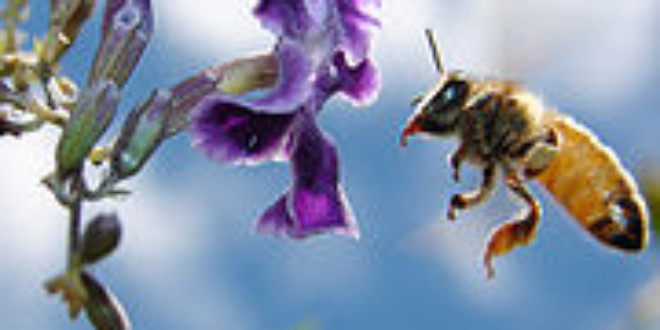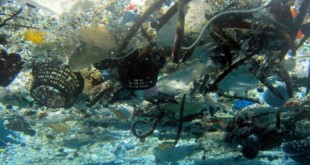(From tehelka.com)- So what if the tiger goes extinct,” argued the economist, “And, err, what was that you mentioned, the bustard. Who knows it exists? Who will know if it goes?” This with a dry laugh. I wouldn’t even try to calculate, in fiscal terms, the benefits of the presence of a top predator, or a bird that denotes a healthy desert grassland — of the value of the timber, the oxygen produced, the water and soil retained and enriched with minerals, water catchments protected, carbon stored and sequestered; of the delicate web of life that will get fatally disrupted as the vital cogs slip and fall into the netherworld.
So many species lost, forever, now existing only in the annals of history. The cheetah, the mountain quail, the pink-headed duck, the passenger pigeon, the Bali tiger and the Tasmanian tiger, the golden toad-and the latest dear departed — a mammal we claim to love, the Yengtze river dolphin. They died unsung, almost unknown — unlike the Dodo, which has acquired a famed status among extinct creatures. And also a certain whimsy, possibly owing to the fact that the little-known dodo was introduced to the literary world by Lewis Caroll as a character in Alice’s Adventures in Wonderland, perhaps inspiring the now well-worn phrase, ‘as dead as a dodo’. But do we equate it with the gravity of extinction, or is it merely used to announce the death of a fad, or maybe a career gone wrong? Do we pause to mourn the passing of a large, ungainly, flightless bird eaten — and beaten — out of existence from the island of Mauritius?
Somehow, I think not.
So, you argue, so what? Isn’t extinction a natural phenomenon? Haven’t there been deaths at such massive-scales before? After all, an estimated 99.9 percent of all the species that have ever appeared on this planet are now gone forever.
But the high extinction rate at the moment is unique, this ‘sixth extinction’ is the fastest in the earth’s 4.5-billion- year history — by some estimates we lose three to four species an hour.
The mass extinctions suffered before were the results of natural phenomena. Like the giant meteorite that hit Earth some 65 million years ago, destroying much of life, including the dinosaurs. But life reshaped itself, and a new evolution began. There are those who say that once we are done with ravaging the planet, and all that’s in it, nature will simply renew itself.
It should unnerve us to know that the extinctions of yore took with them the culprits — the species that dominated and destroyed the earth. Which should be indicative of what lies in store for us: if nature does manage to start from scratch again, it’s entirely possible that new life on earth might not include us.
Moreover, we must remember that this sixth extinction is not being caused by any demon meteor, but by we, the people. And, unlike the meteor, we know what we are doing — what we are destroying and how we are treating the Earth, and its creatures.
So many have gone, so many waiting to go, their numbers down to mere hundreds and declining by the day: the bustard, the dugong, the red panda, the pointy-nosed frog, the Ramaswaran parachute spider, the dancing deer, and…the royal Bengal tiger?
The future of the country’s wildlife is questionable as it struggles against multifold threats — poaching, habitat loss, degradation and fragmentation, and sheer lack of political will to back conservation. The leopard is massacred in great numbers for skin and bones, the rare Asiatic lion — just about 350 of them left — faces a litany of threats in its last refuge, the Gir National Park. Tuskers are killed for ivory, and slaughtered as conflicts between man and elephant intensify. The Lion-tailed macaque faces habitat fragmentation in its only home in the Western Ghats; barely 150 hanguls struggle for survival in land ravaged by the gun.
It’s not only the charismatic and the cuddly that are on the list of the doomed — they merely command more attention, inspire more sympathy. They are not the only ones that need to be protected. Snakes and frogs, insects and bacteria — life on earth needs all of them. Impossible as it may seem, if the planet lost its beneficial bacteria, it would devastate us — and the extinction of a creature as innocuous as the bee would mean we could soon be gone. It’s a keystone species: to repeat Albert Einstein’s apocalyptic view, “If the bee disappeared off the surface of the globe, then man would only have four years of life left. No more bees, no more pollination, no more plants, no more animals, no more man.”
For the record, there has been a catastrophic decline in bee populations across the world.
BIODIVERSITY IS vital for the survival of life on earth. Everything is linked, nothing exists in isolation, but instead in a symbiotic relationship. A break in a crucial link in the chain, and life as we know it would collapse like the proverbial house of cards.
 For the moment, I would rather not worry over what will happen to us if we continue on this merry path of destruction. Or calculate the losses in economic terms. I would just like you to think: Would I, would you, want to live in a world devoid of diversity; the environment only a homogenous structure of gray and concrete? A world in which the only architecture is that of Homo Sapiens, built over the graveyard of God’s creations. Where the forests — if any exist at all — are silenced, no tigers roar in them; where the only bird that streaks across the sky is the crow, scavenging off the rubbish of man. Where no whales swim the seas, no elephants tread the land, no peacocks dance to woo their mates, no butterflies flitter from flower to flower, no new leaves unfurl, no tree takes root….
For the moment, I would rather not worry over what will happen to us if we continue on this merry path of destruction. Or calculate the losses in economic terms. I would just like you to think: Would I, would you, want to live in a world devoid of diversity; the environment only a homogenous structure of gray and concrete? A world in which the only architecture is that of Homo Sapiens, built over the graveyard of God’s creations. Where the forests — if any exist at all — are silenced, no tigers roar in them; where the only bird that streaks across the sky is the crow, scavenging off the rubbish of man. Where no whales swim the seas, no elephants tread the land, no peacocks dance to woo their mates, no butterflies flitter from flower to flower, no new leaves unfurl, no tree takes root….
Does the preservation of our world carry a price, can its value be measured?
Or would you argee it’s priceless?
 Ocean Sentry
Ocean Sentry




